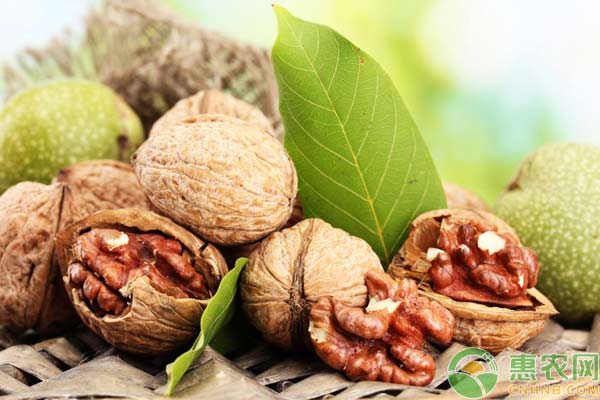I. Overview of Chinese walnut production Chinese walnut cultivation has a long history and a wide range of cultivation, but the cultivation of walnuts has been late. The development history of walnuts in China has experienced three major stages: the trough period, the recovery period, and the rapid development period. After the founding of the People's Republic of China, in the late 1970s, China's walnut production was dominated by seedlings, with low yields and a total output of less than 100,000 tons. In the late 1970s, the planting area and output dropped sharply, and the output fell to 50,000 tons. From 1980 to 1990, it entered the period of recovery and development. Through the methods of breeding, breeding, introduction and domestication, 16 new varieties of early-maturing walnuts were introduced in China, and more than 20 varieties of foreign walnuts were introduced. Promote new varieties, by 1990 the area reached 68,000 hm2, with a total output of 149,600 tons. After the 1990s, the popularity of high-quality varieties and management techniques increased significantly. The walnut industry entered a period of rapid development. By 1991, it reached 75,200 hm2, surpassing the US's 73,300 hm2 for the first time, becoming the world's largest walnut planting country, but the total walnut production. It was 15.16 million tons, while the total output of the United States was 235,000 tons. In 1995, it reached 231,700 tons, making it the world's largest walnut country. According to FAO statistics, in 2014 China's walnut harvested area reached 440,300 hm2, with a total output of 1,602,400 tons, accounting for 44.30% and 46.30% of the world respectively. From 1991 to 2014, the harvested area of ​​walnuts in China increased by 4.86 times and 9.57 times, and the annual growth rate reached 7.99% and 9.57% respectively, making it the fastest growing area in the world. Second, the problem of Chinese walnut production After 30 years of development, China's walnut production has made great progress and has become the world's largest walnut producer. However, compared with other major walnut producing countries in the world, China's walnuts still have some shortcomings. The reasons for the shortage are described below. 1. The degree of good seeding is not high, and the variety is mixed. Although China has cultivated dozens of new walnut varieties such as “Yufengâ€, “Jinhuaxiang No.1â€, “Yufengâ€, “Yunxin†and “Luxiangâ€, the market price of seedlings is high, “ The prices of excellent varieties such as Yufeng and Jinshenxiang 1 are between 6 yuan and 9 yuan per plant, while the walnut planting areas in China are mostly poor mountainous areas. In the face of high-priced seedlings, farmers still use the cost to reduce costs. The seedlings are planted, resulting in a lower degree of walnut seeding. At the same time, in the use of improved varieties of walnuts, there are problems such as mixed varieties and blind introduction. 2, management is extensive, production technology is backward China's walnut planting technology is backward, extensive management, etc. For example, in grafting technology, the United States and France attach great importance to the study of rootstock characteristics, the degree of grafting mechanization is high, and China generally uses artificial grafting; in management, the walnut garden fertilization method is simple, the irrigation system Behind, some areas still rely on natural rainfall. American walnut production generally uses foliar nutrition analysis to guide formula fertilization, using advanced irrigation methods such as sprinkler irrigation and drip irrigation; in the management of pipelines, there is a widespread phenomenon of “replanting light pipesâ€. The average yield per walnut in China is about 1.5 kg, and the yield per unit area is 540 kg·hm-1, which is only 15.3% in the United States. 3, planting fragmentation, low degree of intensification In recent years, the cultivation of walnuts in the world has shown a trend of scale and intensification. For example, the management of walnut gardens in California is second only to citrus. Since the implementation of the collective forest tenure system reform in China, forest land has been concentrated in the hands of various farmers. The cultivation of walnuts is mainly based on individual farmers. The operating units are too fragmented, the degree of intensification is low, and the level of production management technology is uneven. It is difficult to form scale effects. . Third, the promotion strategy 1. Improve the standard of improved seed subsidies, streamlined and improved varieties In order to improve the utilization rate of walnut varieties in China, especially for forest farmers in poverty-stricken areas to use walnut varieties, it is necessary to increase the subsidies for walnut seedlings in the future, and adopt different subsidy standards for different regions. In order to solve the problem of mixed varieties of walnuts, France, the United States and other countries are actively streamlining the fine varieties. For example, France has used more than 100 varieties, and currently only retains and develops seven. The main varieties of the United States are only Hitler, Hartley, There are 6 varieties of Hill, Wiener, Turaire and Howardi. Therefore, while actively cultivating good varieties, it is necessary to streamline the number of improved species and promote regionalized varieties. 2. Adhere to science and technology to promote production and improve management level While actively researching new technologies and cultivating new varieties, local governments should set up technical guidance institutions to carry out training on standardized cultivation of walnuts for local forest farmers, and actively promote seedlings, seedlessness, irrigation facilities, scientific management, and mechanization of harvesting. Encourage the establishment of high-standard planting demonstration parks and standardized management demonstration parks. Leading the forest farmers to change their thinking and comprehensively improve their management. 3. Encourage the development of walnut cooperatives and support leading enterprises In view of the low degree of intensification of “zeroâ€, “scatter†and “small†walnut cultivation in China, and the lack of scale effect, we encourage the development of walnut cooperatives to realize the transformation of walnut planting from sporadic dispersion to centralized scale. At the same time, in view of the characteristics of China's walnut enterprises with large number, small scale and weak competitiveness, we must actively support leading enterprises and integrate existing walnut brands to form a large-scale "fist" brand. Veterinary Drugs: refers to substances (including medicated feed additives) used to prevent, treat, diagnose animal diseases or purposefully regulate animal physiological functions.
Veterinary drugs mainly include: serum products, microecological products, Chinese herbal medicines, proprietary Chinese medicines, chemicals, antibiotics, and topical pesticides, disinfectants, etc.
Veterinary Drugs,Veterinary Medicine,Veterinary Injectable Drugs,Veterinary Pharmaceutical Drugs XI AN RHINE BIOLOGICAL TECHNOLOGY CO.,LTD , https://www.rhinebiotech.com

